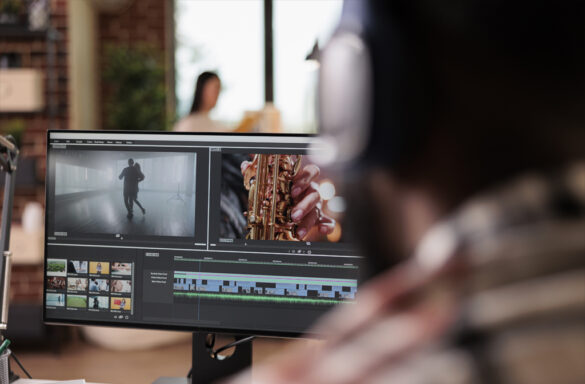SFM Compile is an important part of working with Source Filmmaker (SFM). It allows creators to bring their ideas to life by turning animation files and models into usable parts of a finished video. Whether you’re making a fun short film or a detailed animated story, compiling your assets the right way is the first step toward high-quality results.
In this guide, you’ll learn what SFM Compile is, why it matters, and how to do it yourself. We’ll walk you through a step-by-step process that even beginners can follow. If you’re new to animation or still figuring out how SFM works, don’t worry—this guide uses simple language that even an 11-year-old can understand.
Table of Contents
What Does SFM Compile Mean?
SFM Compile means turning your raw files—like models and textures—into a final version that Source Filmmaker can use. This includes compiling animations, character models, backgrounds, and other assets needed to complete your video.
Without compiling, your project may not work properly in SFM. The tool needs these files in the right file formats to play animations smoothly. When done right, your animation sequences will look amazing and run without errors. That’s why compiling is so important.
Why Is SFM Compile Important in Animation?
If you’re serious about creating high-quality animations in Source Filmmaker, you need to understand SFM Compile. It’s how you prepare your characters, scenes, and movements before the editing stage. It helps organize your project so SFM can read and use the files correctly.
When your files are compiled properly, you avoid problems like missing models, broken textures, or animation glitches. This not only saves time but also makes your final video more professional. Many beginners skip this step, but it can make a huge difference in your work.
Step-by-Step: How to Use SFM Compile
Step 1: Gather Your Assets
Before you start compiling, collect all the assets you need. This includes models, textures, and animation files. Make sure they are in the correct folders and organized clearly. Keeping things neat helps you avoid mistakes later.
Next, double-check that your files match the required file formats for SFM. For example, models should be in .mdl format, and textures in .vtf. If your files aren’t in these formats, use tools to convert them first.
Step 2: Open the Compiler
Once your assets are ready, open the SFM Compile tool. This is often a part of other software used with Source Filmmaker, such as Crowbar. These tools help you compile animations and models into formats that SFM understands.
Follow the prompts to select the files you want to compile. You’ll be asked where to save the compiled versions. Choose a spot that’s easy to remember. Many users create a folder called “CompiledAssets” to keep everything together.
Common Mistakes to Avoid During SFM Compile
One common mistake beginners make is compiling the wrong file formats. SFM only works with specific formats, so be sure to check before compiling. If you’re unsure, search for format guides or use trusted file converters.
Another mistake is forgetting to test the compiled files in SFM before starting your project. Always load your models and animation sequences into Source Filmmaker after compiling to make sure everything works smoothly. This can save a lot of time and frustration.

How to Compile Models and Animation Files
Compiling models is a key part of SFM Compile. It takes the 3D model you’ve made or downloaded and turns it into something SFM can read. Tools like Crowbar are often used to make this easier. These tools take your .smd or .qc files and build them into .mdl files.
When it comes to animation files, you need to make sure they are also properly formatted. Using tools like Blender or Maya, you can export animations and then compile them with your models. This ensures that your animation sequences are smooth and match the characters.
File Formats You Need to Know for SFM Compile
For models, the most common file types you’ll see are .smd, .qc, and .mdl. Textures often come in .vtf and .vmt formats. Animations are usually saved as .smd files before being compiled. Knowing these file formats makes the compiling process much easier.
Additionally, make sure your textures are linked properly in your .qc file. If textures are missing or not placed correctly, your model might appear gray or broken in SFM. Always check your files carefully before hitting compile.
Tips for High-Quality Compiling in Source Filmmaker
To get the best results, always use high-quality assets. Low-quality models or textures will look worse after compiling, no matter how good your animation is. Also, name your files clearly. For example, use names like hero_model.qc or walk_cycle.smd instead of random letters.
Using folders like “Models,” “Textures,” and “Animations” keeps everything neat. When you’re organized, the compiling assets step becomes quicker and less stressful. Plus, you’ll avoid the common problems that stop many beginners from finishing their projects.
How to Fix Issues After SFM Compile
Sometimes, even when you follow the steps, things go wrong. Maybe your model looks weird, or the animation file doesn’t play correctly. Don’t panic! The first step is to check your compiler tool’s log. It often tells you exactly what went wrong.
Next, go back to your original files and make changes. Maybe a texture path is broken or a bone in the animation isn’t connected. Fix the problem and try compiling again. Many creators go through this trial-and-error process at first—it’s how you learn.
Final Thoughts on SFM Compile
SFM Compile is an essential skill if you want to make polished videos in Source Filmmaker. While it may seem tricky at first, breaking it down into simple steps makes it totally manageable—even for a beginner.
By learning how to compile animations, prepare models, and manage the correct file formats, you’ll be well on your way to creating professional-looking content. With time and practice, you’ll be able to turn any idea into an animated masterpiece using SFM.

FAQs
1. What does SFM Compile mean?
SFM Compile means turning files like models and animations into a format that Source Filmmaker (SFM) can use. This is an important step before using assets in your animation project.
2. Why do I need to compile models and animation files in SFM?
Compiling makes sure your models, textures, and animations work smoothly in SFM. Without compiling, your files might not load, or they may appear broken in the animation.
3. What tools can I use for SFM Compile?
You can use tools like Crowbar to compile animations and models. These tools help convert files into the right file formats for SFM, like .mdl for models.
4. What file formats are needed for compiling in Source Filmmaker?
Common formats include .smd and .qc for input, and .mdl for compiled models. Textures are often in .vtf format, and animations are usually .smd before compiling.
5. Can beginners learn to use SFM Compile?
Yes! With step-by-step instructions and some practice, even beginners can learn how to compile animation files and models. The key is to stay organized and follow simple guides.
Visit our website: Organize Blogs

